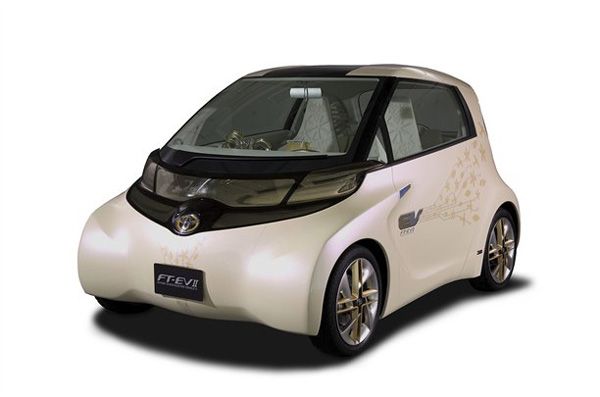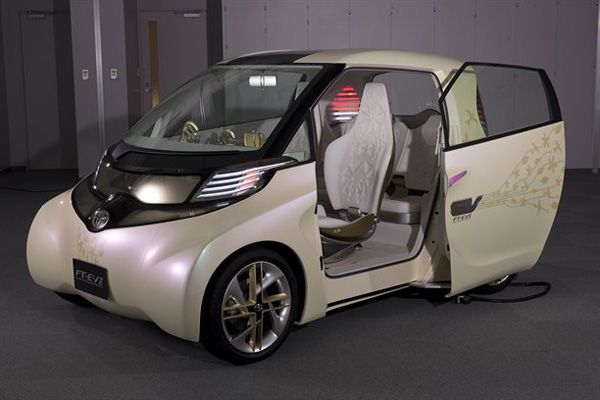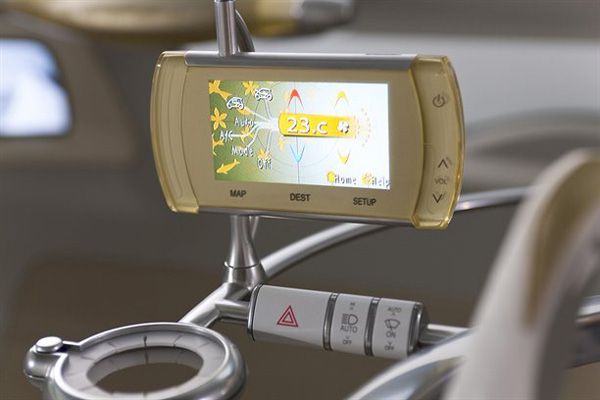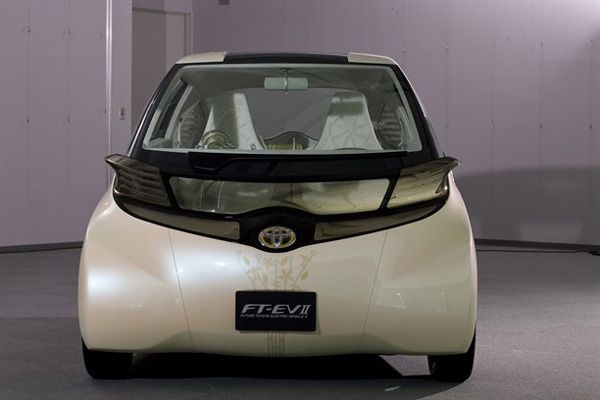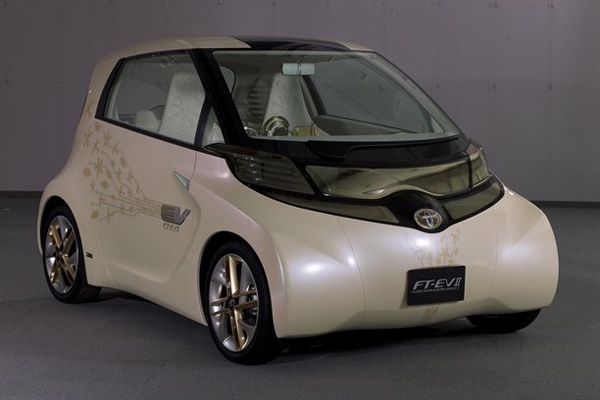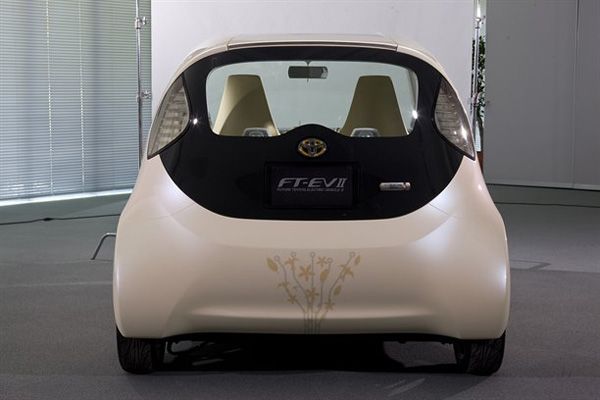Now that you have delighted quite enough with the FT-86 Concept, is time to move our attention to the second Toyota concept to be revealed in Tokyo: the FT-EV II, which stands for "Future Toyota Electric Vehicle II". It is a four-seater concept that previews the upcoming small city electric vehicle set to be released by 2012. The FT-EV I was revealed at the 2009 Detroit Auto Show.
The FT-EV II Concept is placed under the iQ in Toyota's line-up. It measures 2730 mm in length, 1680 mm in width and 1490 mm height. The vehicle has no steering wheel or foot pedals-symbols of vehicle performance. In addition, it has not been designed simply as a means of transport, but instead based on the premise of collaboration with communications functions, a concept that differs from earlier vehicles.
The car is powered by a lithium-ion battery pack that has an autonomy of 56 miles and can hit a top speed around 62 mph.
Press release after the jump.
toyota-ft-ev-ii-concept
- Make: Array
- Model: toyota-ft-ev-ii-concept
2010 Toyota FT-EV II Concept
- [do not use] Vehicle Model: Array
Press release
The FT-EV II, which stands for "Future Toyota Electric Vehicle II", is a concept car that was created from the core technology of the Toyota Hybrid System in the pursuit of the ultimate environmentally-considerate vehicle. Its lithium-ion battery provides a cruising range in excess of 90km on a full charge, which is more than enough for everyday use, and a maximum speed in excess of 100km/h. Since it is an electric vehicle, naturally it is an environmentally-considerate vehicle that produces absolutely no CO2 emissions while driving.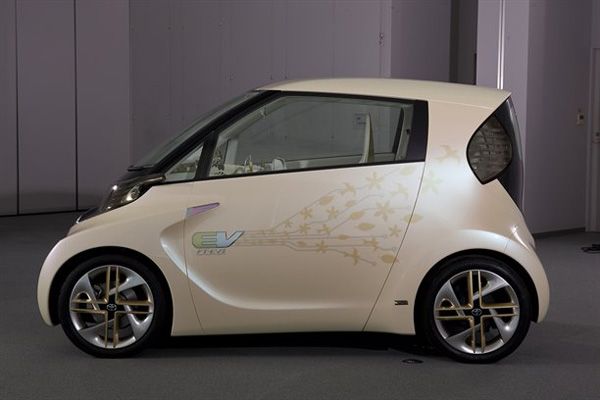 A distinctive, compact body with bright exterior colors has been designed in accordance with Vibrant Clarity, Toyota-brand design philosophy. The compact exterior and retro-futuristic interior feature designs that evoke images of the future.
A distinctive, compact body with bright exterior colors has been designed in accordance with Vibrant Clarity, Toyota-brand design philosophy. The compact exterior and retro-futuristic interior feature designs that evoke images of the future.
The vehicle has no steering wheel or foot pedals-symbols of vehicle performance. In addition, it has not been designed simply as a means of transport, but instead based on the premise of collaboration with communications functions, a concept that differs from earlier vehicles. The console incorporates communications functions to achieve a more seamless link with information, expressing the new vehicle concept of the electric vehicle as an information device.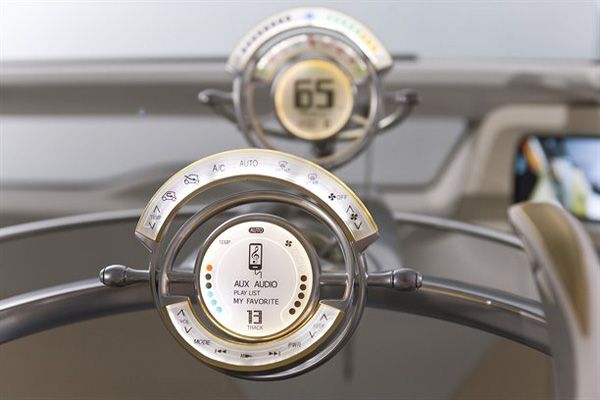 Enhanced communications functions enable the linking of individual drivers' information on a network, allowing the vehicle to connect with services that go beyond car navigation, such as recommending information tailored to the individual's preferences and downloading music and movie content. Furthermore, the vehicle can connect to home networks to play a role in storing energy and saving large volumes of data, making the vehicle a new information device in the networked society of the future.
Enhanced communications functions enable the linking of individual drivers' information on a network, allowing the vehicle to connect with services that go beyond car navigation, such as recommending information tailored to the individual's preferences and downloading music and movie content. Furthermore, the vehicle can connect to home networks to play a role in storing energy and saving large volumes of data, making the vehicle a new information device in the networked society of the future.
The FT-EV II is not simply an electric vehicle designed for a post-fossil fuel era, but is a sustainable concept car that focuses on the relationship between cars, people and society of the future.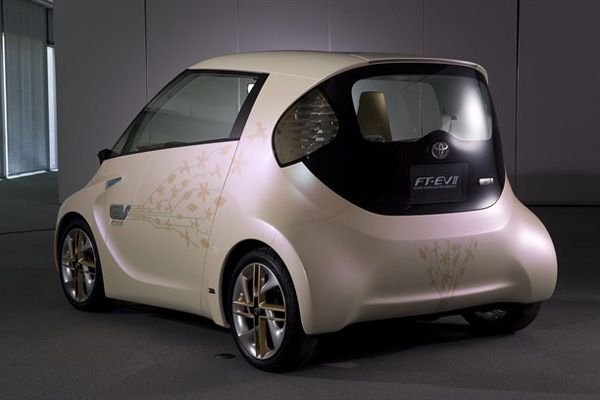 The FT-EV II is primarily designed for short-distance travel and is positioned as a commuter vehicle for urban use, but as it integrates communications, it will become a device that can provide completely new links between vehicles and people.
The FT-EV II is primarily designed for short-distance travel and is positioned as a commuter vehicle for urban use, but as it integrates communications, it will become a device that can provide completely new links between vehicles and people.

